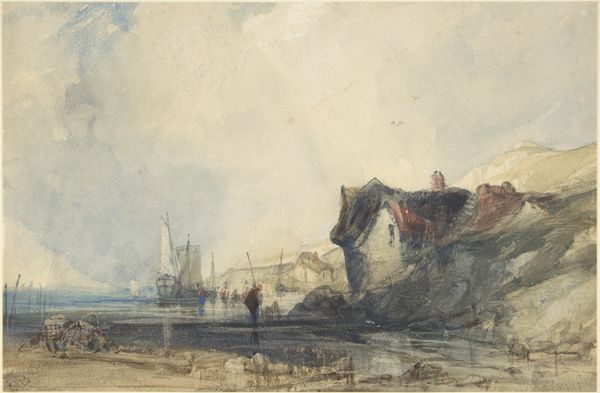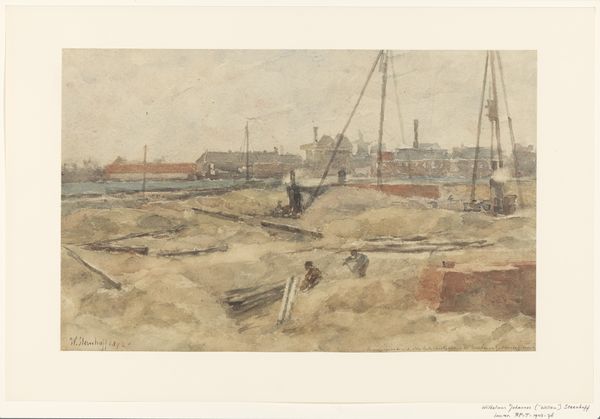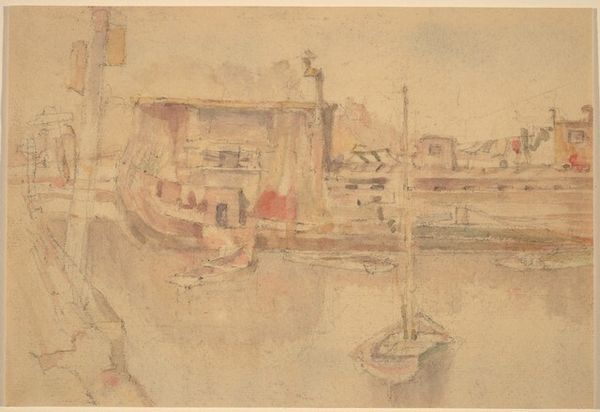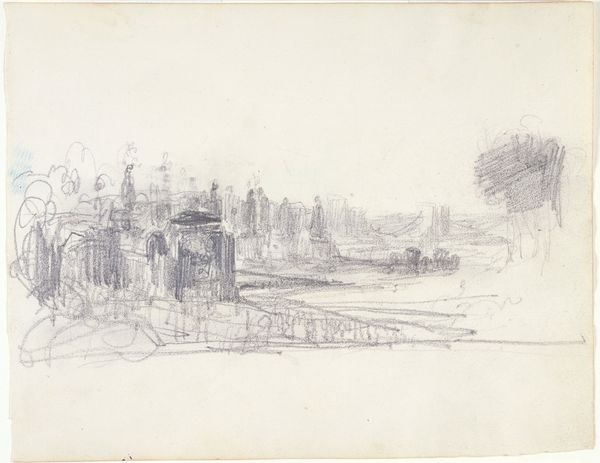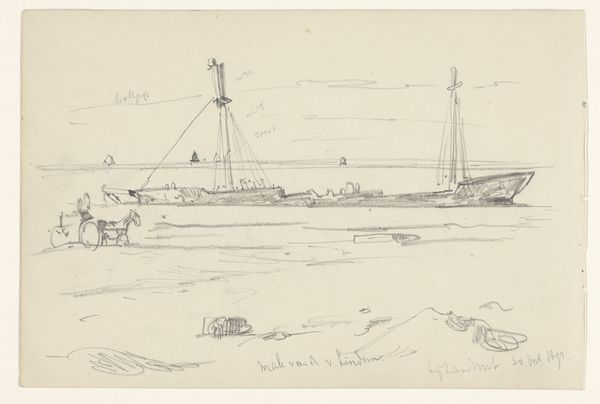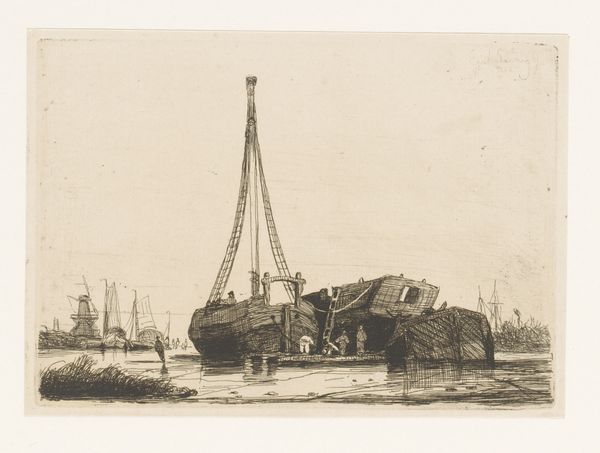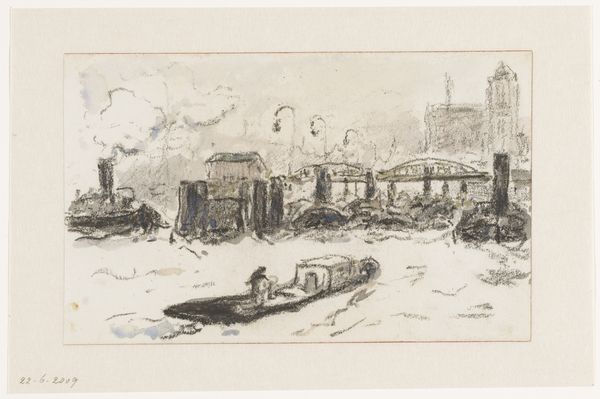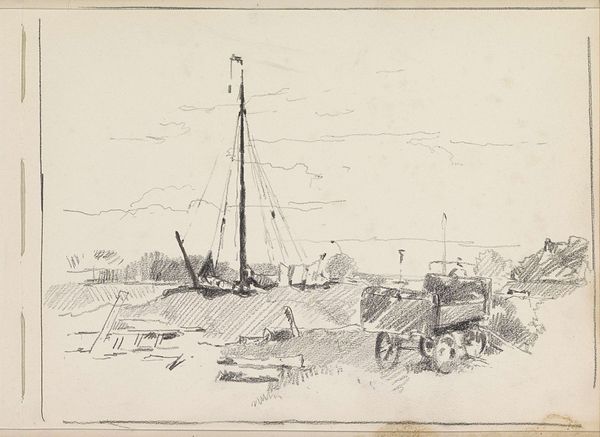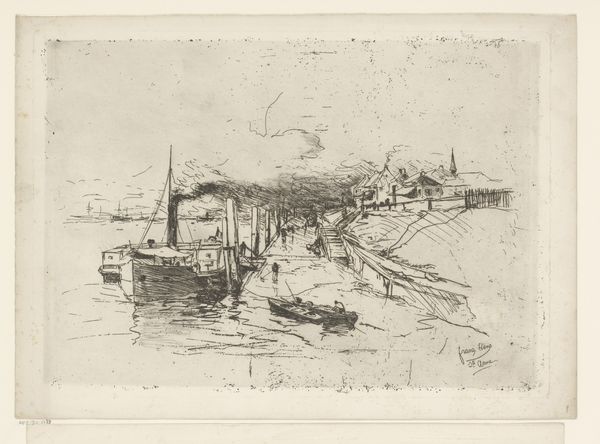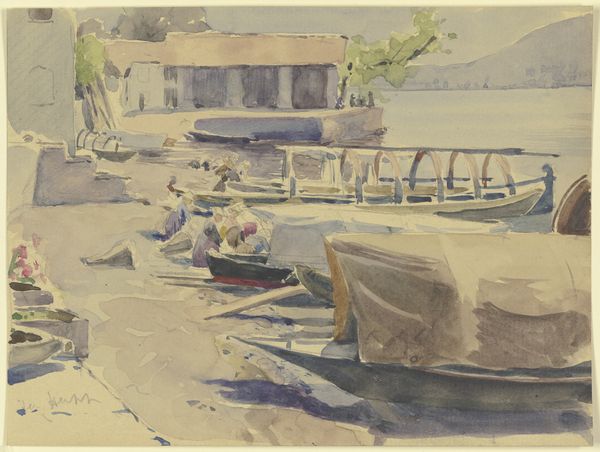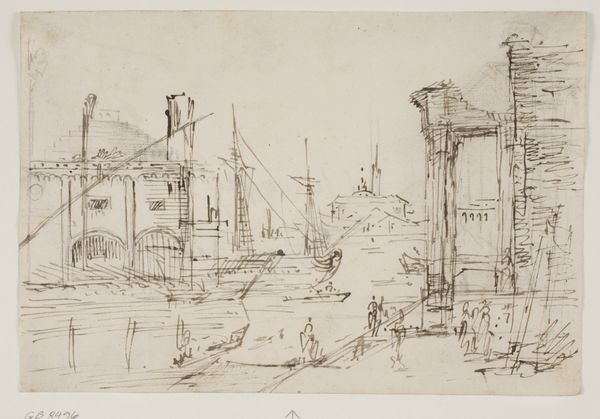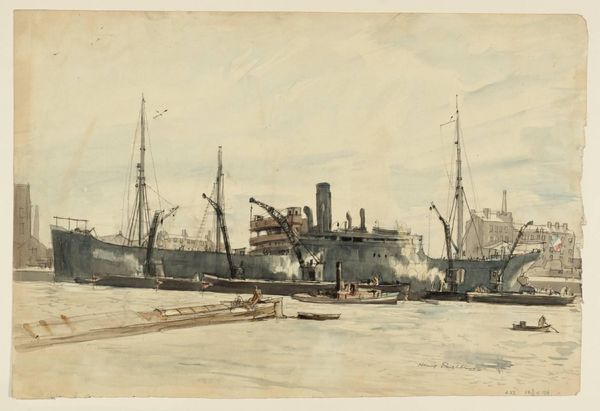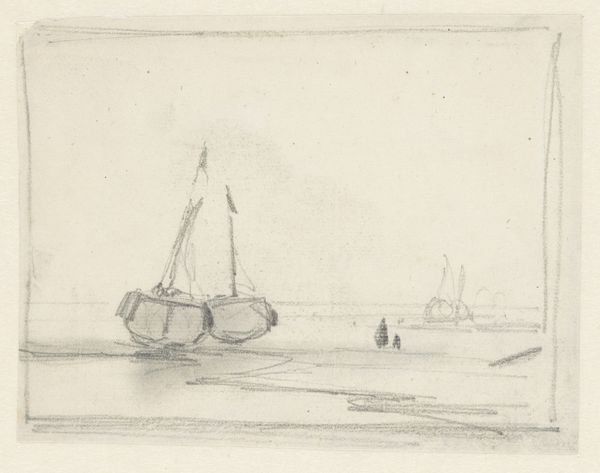
Dimensions: height 115 mm, width 186 mm
Copyright: Rijks Museum: Open Domain
Curator: This delicate watercolor is titled “Point du Jour, Paris,” created in 1905 by Carel Nicolaas Storm van 's-Gravesande. Editor: Immediately, I'm struck by the muted palette; it evokes a quiet, almost melancholic atmosphere. The architectural structures are softened, almost dissolving into the mist. Curator: Indeed. It captures the fleeting essence of a cityscape undergoing rapid industrial change. Consider the symbolism: the bridge hinting at established order juxtaposed with the prominent crane, a symbol of burgeoning industry. This era was marked by significant societal shifts and grappling with modernity's impact on urban life. Editor: Precisely! And it's interesting how the soft washes of color almost belie the subject's industrial nature. The crane, though large, is rendered with the same gentle hand as the water, creating a visual harmony that is quite pleasing, though perhaps deceptive. What message is communicated to a viewer? Curator: Storm van 's-Gravesande invites the viewer to contemplate Paris' evolving identity through his Impressionistic lens. Watercolor, typically used for landscapes and portraits, is now employed to document urban industrial progress, giving this common sight certain artistic dignity. Editor: I am wondering: if the industrialisation is painted in such fragile media, could we read that as a social statement for the working conditions of that time and industrial future? Curator: Possibly. His choice of media and fleeting brushstrokes evoke a sense of transience, perfectly capturing a city caught between honoring its past and hurtling towards an industrialized future. What does the artist leave behind to the Parisian social commentary and critique? Editor: To conclude, while it documents change, I’d argue that his technical choices ensure the social themes stay softly spoken. An engaging juxtaposition indeed. Curator: I agree. Van 's-Gravesande prompts reflection of the ephemeral nature of progress itself in the modernizing world and in constant urban flux.
Comments
No comments
Be the first to comment and join the conversation on the ultimate creative platform.
